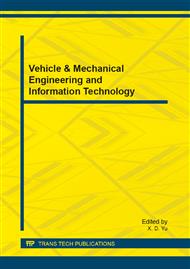p.3
p.9
p.13
p.17
p.25
p.29
p.33
p.42
Plastic Deformation and Fracture Initiation Typology Analysis under a Triaxial Tensile State of Stress Using the Quantitative Assessment of Microstructural Changes
Abstract:
The paper approaches the influence problems, due to increase in plastic deformation and fracture initiation, upon the multi-axial stress state. The experiments are based on determining the geometric changes of stress concentrators and the increase of granulation anisotropy of unalloyed steel related to the plastic deformation. In order to evince the changes in the concentrators shape, at high levels of deformation, an average parameter of shape was introduced. The 3D Complex representations, based on measurements have indicated the dependence of longitudinal specific deformations for the deformation degree, as well as sectional position in the area under measurement. The variation functions of the longitudinal specific deformation of the medium average shape parameter showed an opposed linear dependence at the top of the tension concentrator relatively to the tested specimen axis. Taking into consideration the average parameter of shape, the experimental correlations were more conclusive. Evaluating the microstructural state of stress concentrators, the deformations have revealed distinct fracture typologies, influenced by the specific state of deformation. By synthesizing the information regarding the fracture initiation, an typological diagram of fracture initiation TDI was elaborated. In this diagram, representing the cross section of the specimens, for different values of the stress concentrator factor, six quasi-quantitative zones have been analyzed.
Info:
Periodical:
Pages:
17-24
Citation:
Online since:
December 2012
Authors:
Keywords:
Price:
Сopyright:
© 2013 Trans Tech Publications Ltd. All Rights Reserved
Share:
Citation:


